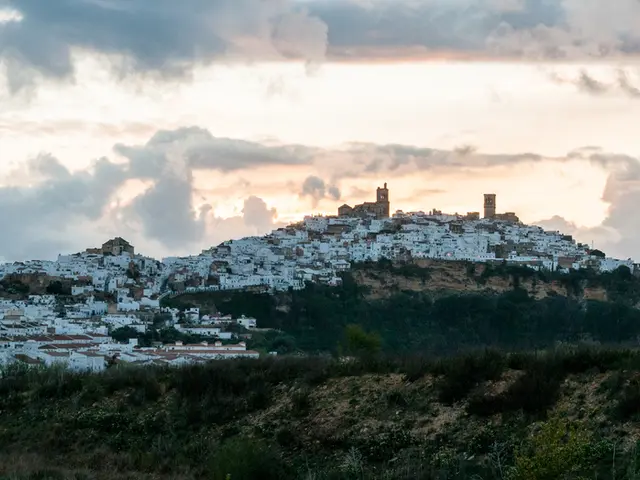Mastering Tree Recognition: Insight into Poland's Authentic Indigenous Tree Varieties
Polish forests, an ode to nature's artwork, make up approximately 30% of the country's territory. This expansive green belt stretching across more than 9.1 million hectares, a vast majority of which is state-owned, is home to diverse flora, fauna, and fungi. The forest cover has been gradually increasing since 1945, thanks to dedicated afforestation efforts, and initiatives aim to boost this to 33% by 2050.
The forests of Poland play a crucial role in maintaining the country's biodiversity and serve as a time capsule that holds trees with centuries-old histories. Analogous to our fingerprints, the bark of a tree is its unique identifier, differing profoundly among species. While some trees have smooth bark, others sport shaggy or peeling textures, and still, others sport deeply furrowed or ridged bark. These physical traits, combined with other characteristics such as leaf shape, flowers, and overall growth pattern, help in identifying the tree species.
Poland's forests are a haven for a variety of native tree species. Let's delve into the world of some commonly spotted species and their defining features:
Native Polish Tree Species: The Who's Who
1. Scots Pine (Pinus sylvestris)
- Characteristics: Needle-like leaves in bundles of two, rough, scaly bark, and cones that turn reddish-brown when mature. Adaptable to poor soil conditions, fast-growing.
2. Norway Spruce (Picea abies)
- Distinctive Features: Linear, needle-like leaves, smooth bark (scaly with age), and brown, cylindrical cones. Commonly used for timber production, these fast-growing trees don't mind the cold.
3. Silver Birch (Betula pendula)
- Identifiers: Double-toothed leaves with a pointed tip, white, smooth bark (often peeling), and small, winged seeds produced by catkins. Known for their rapid growth and adaptability to cold conditions.
4. European Beech (Fagus sylvatica)
- Identifying Marks: Ovate leaves with a wavy margin, rough bark (smooth when young), and small nuts known as beechnuts. These trees grow slow to moderately, often forming dense stands.
5. European Hornbeam (Carpinus betulus)
- Characteristics: Ovate leaves with a doubly serrate margin, smooth bark (fluted with age), triangular nuts. These slow-growing trees are often used for hedging.
6. Oak Trees (Quercus spp.)
- Features: Lobed or deeply toothed leaves, rough bark (scaly with age), and produce acorns. These trees grow slow to moderate, are highly valued for their timber, and come in species like the Sessile Oak and the Pedunculate Oak.
7. Sessile Oak (Quercus petraea)
- Identifiers: Lobed leaves without a stalk, acorn-producing, often found on poorer soils compared to the Pedunculate Oak.
8. Pedunculate Oak (Quercus robur)
- Characteristics: Lobed leaves with a stalk, acorn-producing, more common in wetter conditions.
These natives embody the vibrant biodiversity of Poland's forests, serving as a topographical tableau and supporting complex ecosystems that nourish a myriad of fauna. Efforts to protect and expand high-nature-value forest areas, such as the "Connected Polish Forest," aim to safeguard the rich heritage these species bestow upon our land.
The diverse tree species in Poland's forests, such as the Scots Pine, Norwegian Spruce, Silver Birch, European Beech, European Hornbeam, Oak trees, Sessile Oak, and Pedunculate Oak, are integral components of the lifestyle, home-and-garden enthusiasts would appreciate. Understanding their distinctive features, like needle-like leaves, smooth bark, and acorns, can provide a unique fashion-and-beauty element with intricate decorative woodwork. Not only are these trees a source of food-and-drink, as their nuts and cones can be consumed, but they also play an educational role for self-development, especially in the field of environmental studies. The traveler who explores Poland's forests, rich in native tree species, is in for a journey that encompasses various aspects of education-and-self-development, food-and-drink, home-and-garden, fashion-and-beauty, and lifestyle experiences.






